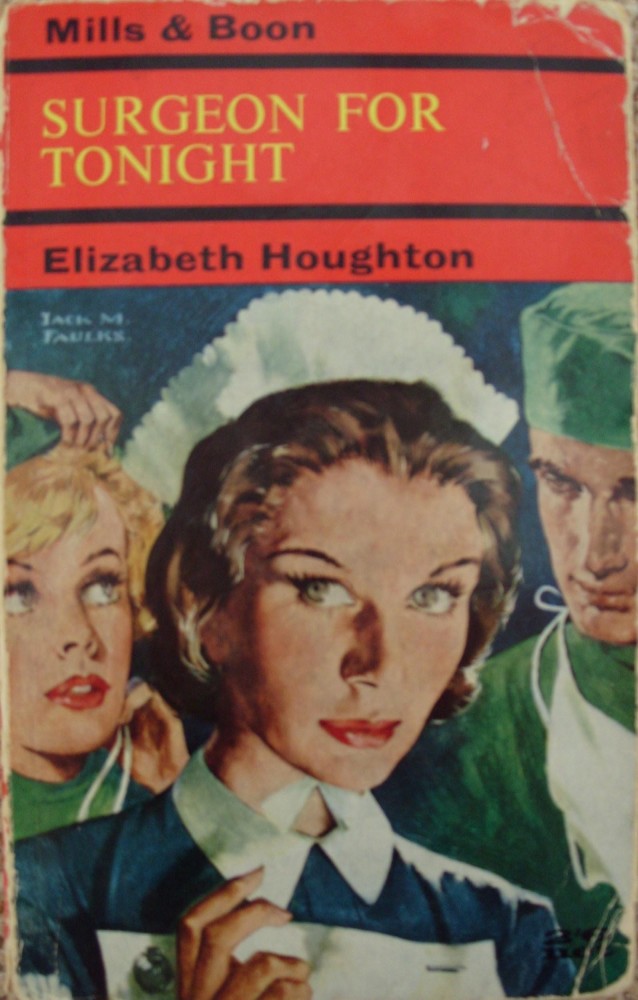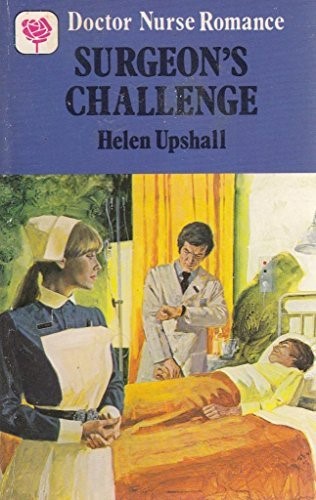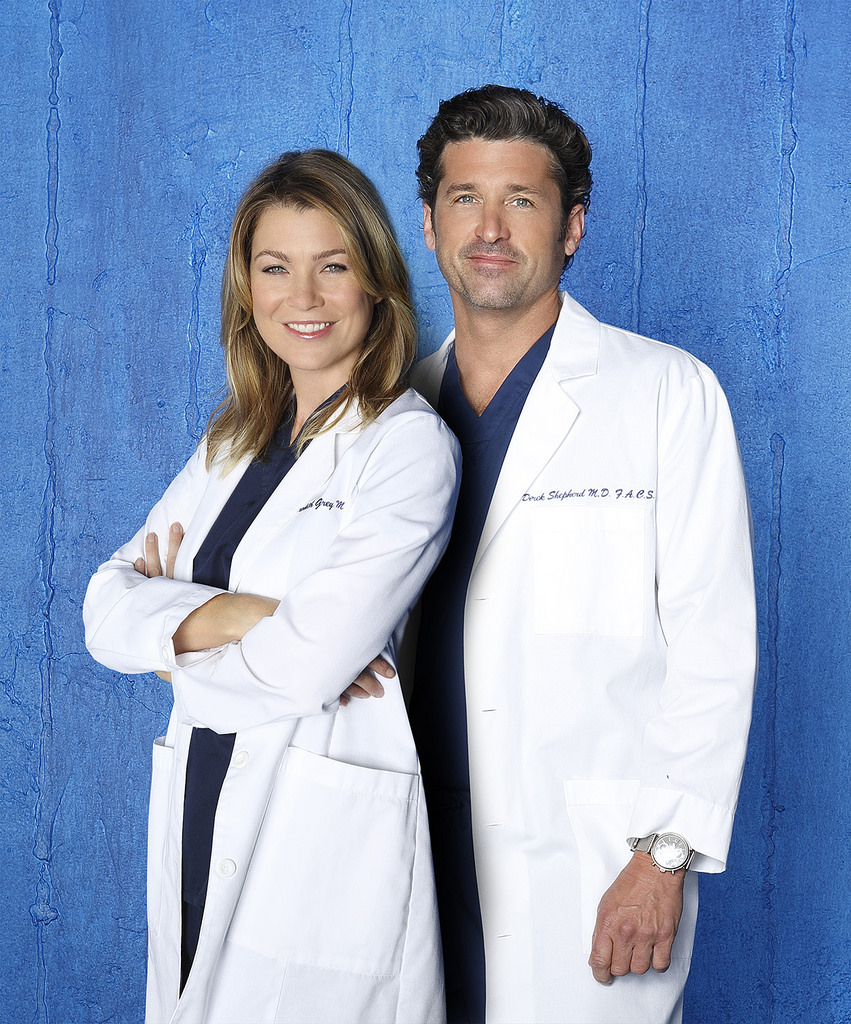
To celebrate Valentine's Day, Research Fellow Agnes Arnold-Forster opens up the world of Mills & Boon medical romances.
Mills & Boon are the most prolific publishers of romance novels in Britain. Founded in 1908 as a general fiction publisher, it soon became clear that romances outsold all else. Today, Mills & Boon have 3.2 million devoted readers in the UK and 50 million worldwide, they sell 200 million novels every year, and a Mills & Boon paperback is sold in a UK bookshop on average every 6.6 seconds.
You might be wondering what Mills & Boon has to do with surgery and emotions. From the 1950s, a new sub-genre of romance story emerged – the ‘Doctor-Nurse’ romances. These, as the title suggests, usually involved a love affair between a male doctor or surgeon and a female nurse, set in an NHS hospital. However, they increasingly included female surgeons and physicians as well as nurses, and sometimes featured male nurses or patients as potential love interests.

In 1972, world sales in the English language alone were 26,800,000 copies and in 1973 sales exceeded 30 million. Throughout the 1950s, ‘60s and ‘70s, translations into Finnish, Swedish, Norwegian, Danish, German, Italian, Spanish, Portuguese and Hebrew were also common.[1] Mills & Boon published in a form and at a price that was within the reach of a wide readership. They were sold in ubiquitous high street shops like Woolworths and WH Smith and were distributed through public and private lending libraries.
These novels were fictional and romanticised tellings of hospital life, but they were grounded in reality and in the lived experiences of people who worked for the NHS. If you wanted to write a medical Mills & Boon, the publishers insisted that you had to have professional medical or nursing experience. One author, Elizabeth Gilzean, was a nurse in Birmingham; another, Hilda Nickson, trained as a nurse at Nottingham City Hospital and worked there for twelve years as a staff nurse; Alex Stuart was a pathologist (who wrote under various pseudonyms including ‘Vivian Mann’); and Marjorie Coburn (also known as ‘Marjorie Moore’) was a radiographer.
Not only were these medical romances written by women with clinical experience, but they were also hugely popular with a non-medical readership. Mills & Boon novels were widely sold, but Doctor-Nurse romances were particularly successful. In a survey conducted in the 1970s, the most popular type of story was one with a ‘foreign background’ (48% of people listed those as their first choice); however, Doctor-Nurse romances were people’s second favourite (21%).[2]
The survey confirmed what the publishers had long known – that stories set in hospitals appealed to their readers and were, for some reason, particularly meaningful settings for romance narratives. Editor and Co-Director, Alan W. Boon wrote to author Marjorie Coburn in 1953, ‘You have never yet let us have a hospital flavour in the title, and I know it is something rather difficult to achieve. If you can achieve this, however, it is a definite asset to sales’.[3] The publishers and authors rarely reflect explicitly on why medical themed romances were so popular with readers, but they must have confirmed and conformed with widely-held and culturally salient tropes about hospitals, hospital life, and the healthcare professions.

One of these tropes was the idea that healthcare institutions were romantic places full of love affairs and sexual intrigue. The Mills & Boon hospitals were populated by women actively seeking love and using their clinical careers to secure a husband. In Staff Nurses in Love, the heroine’s best friend Brenda says, ‘For every one Florence Nightingale in nursing…there are dozens more like me who take up nursing because they think they might be able to hook a famous doctor or surgeon’.[4]
Male doctors, and specifically male surgeons, were sex-symbols and romantic heroes. They conformed with visions of hegemonic, virile masculinity. They were also ideal manifestations of clinical professionalism and were repeatedly described as being emotionally detached or restrained. In ‘Love Unspoken’, a romantic novel serialised in the magazine Woman’s Own, the hero is described thus, ‘At thirty Philip Redwood was nearing the peak of his profession. There were some who said he was ruthless in his determination to get to the top, but he was oblivious of the criticism levelled against him, oblivious too, of the idolatry of the younger nurses in the hospital’.[5] Completely focused on his work and professional advancement, Redwood represents the ideal man to the hospital’s female staff members (and, by implication, the readers of Woman’s Own). In this way, emotional detachment from patients was mirrored by a disinterest in love and female affection. In Hilda Pressley’s Staff Nurses in Love, the heroine ruminates anxiously about the unobtainable hero, ‘She thought of Dr Kendal, that rather forbidding, taciturn physician. She could not imagine any woman, nurse or not, finding her way to his heart’.[6] Author Elizabeth Gilzean described the hero of her new novel in a letter to her editor, Alan W. Boon, as ‘detachedly cold-blooded’ and said that he exploits the nurse-heroine’s affections ‘quite shamelessly’.[7]
The novels also frequently described their heroines – whether they were doctors, nurses, or surgeons – as conforming to traditional visions of femininity and feminine beauty. Throughout, authors referred to their protagonists’ physical appearance. Hilda Nickson described her heroine as turning ‘a slender, youthful figure in pale green, a floppy straw hat perched on her honey-coloured hair’.[8] Conventional visions of femininity were not, however, confined to appearance. Some novels and authors articulated restrictive or regressive ideas about the social and professional role of women in the mid-twentieth century. In a letter from Gilzean to Boon, she describes how one of her characters must come to terms with what she sees as predetermined female wants and desires, ‘Anne will soon have to face...the fact that for a woman a medical career alone is not enough’.[9] As late as 1980, one book’s blurb described its heroine’s unmarried status in the following terms, ‘Her success as a nurse is undoubted – but as a woman? Isn’t she, at the age of twenty-five, in danger of waking up to find that life has passed her by?’[10]

This idea that hospitals are places of romance, that male surgeons and physicians are both sex symbols and eligible bachelors, and that female healthcare professionals are there primarily to find a husband continues to be prevalent in popular culture. One TV historian described the popular US hospital drama Grey's Anatomy as a ‘throwback to an era when doctors were dashing, male and handsome and any females around (usually nurses) were glamorous, sexy and supportive’. We know, too, that women working in clinical settings continue to be subjected to regressive ideas about their capabilities and sexuality.
Yet we also know that many doctors, surgeons, and nurses find love and sexual satisfaction at work. Perhaps because they spend their lives in such unusual and close proximity to their colleagues - siloed off during medical school, living on hospital sites, and working incredibly long hours - many healthcare professionals marry and make love ‘in house’. A 2014 profile of US physicians found that 40% of doctors marry other doctors or healthcare professionals. Liz O’Riordan, a consultant breast surgeon in Suffolk said that the healthcare environment ‘is a flirty environment, such as when you’re working in surgery...If you fancy someone, operating alongside them breaks the ice, particularly when you’re basically wearing pyjamas’. As a result, while we at Surgery & Emotion hope that your hospital-based relationships are more equitable and mutually-satisfying than those portrayed in mid-twentieth-century medical Mills & Boon novels, we hope you find some time out of your busy days to enjoy a bit of romance this Valentine’s Day.
[1] Peter H. Mann, A New Survey: The Facts About Romantic Fiction (Mills & Boon, 1974), p. 13.
[2] Peter H. Mann, ‘Mills and Boon Romance Authors: A Comparison’, July 1970, MB ADM/4/2.
[3] Letter from Alan W. Boon to Marjorie Coburn, 15th June 1953, MB AB/1/020.
[4] Hilda Pressley, Staff Nurses in Love (Mills & Boon, 1962), p. 9.
[5] Rachel Lindsay, ‘Love Unspoken’, Woman’s Own (18th March 1954), p. 14.
[6] Hilda Pressley, Staff Nurses in Love (London: Mills & Boon, 1962), p. 13.
[7] Letter from Elizabeth Gilzean to Alan W. Boon, 25th April 1957, MB AB/1/035a.
[8] Hilda Nickson, Surgeons in Love (Mills & Boon, 1962), p. 5.
[9] Letter from Elizabeth Gilzean to Alan W. Boon, 25th April 1957, MB AB/1/035a.
[10] Helen Upshall, Surgeon’s Challenge (Mills & Boon, 1980).